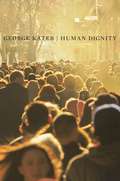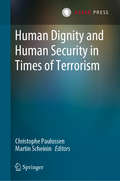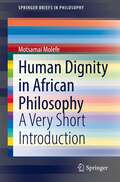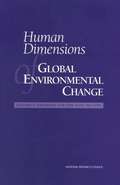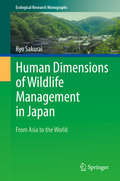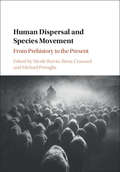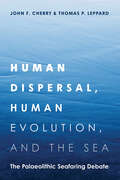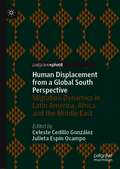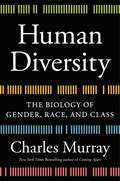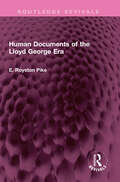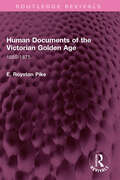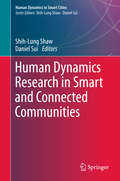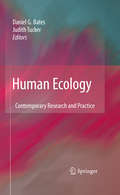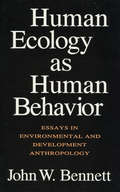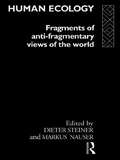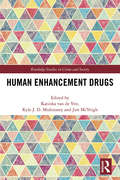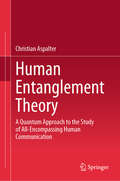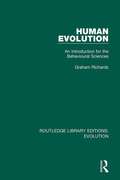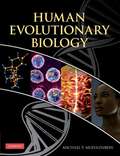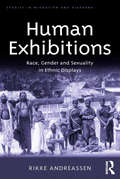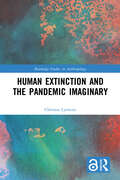- Table View
- List View
Human Dignity
by George KatebWe often speak of the dignity owed to a person. And dignity is a word that regularly appears in political speeches. Charters are promulgated in its name, and appeals to it are made when people all over the world struggle to achieve their rights. But what exactly is dignity? When one person physically assaults another, we feel the wrong demands immediate condemnation and legal sanction. Whereas when one person humiliates or thoughtlessly makes use of another, we recognize the wrong and hope for a remedy, but the social response is less clear. The injury itself may be hard to quantify. Given our concern with human dignity, it is odd that it has received comparatively little scrutiny. Here, George Kateb asks what human dignity is and why it matters for the claim to rights. He proposes that dignity is an “existential” value that pertains to the identity of a person as a human being. To injure or even to try to efface someone’s dignity is to treat that person as not human or less than human—as a thing or instrument or subhuman creature. Kateb does not limit the notion of dignity to individuals but extends it to the human species. The dignity of the human species rests on our uniqueness among all other species. In the book’s concluding section, he argues that despite the ravages we have inflicted on it, nature would be worse off without humanity. The supremely fitting task of humanity can be seen as a “stewardship” of nature. This secular defense of human dignity—the first book-length attempt of its kind—crowns the career of a distinguished political thinker.
Human Dignity and Human Security in Times of Terrorism
by Martin Scheinin Christophe PaulussenIn this book, it is explained that despite a current drop in the number of deaths, terrorism should still be considered a serious and widespread problem. However, the responses to this phenomenon are often more problematic from a long-term perspective. With the human rights framework under serious pressure, this edited volume offers a timely, important and critical in-depth analysis of human dignity and human security challenges in the lead-up, and in the responses, to current forms of terrorism. It aims to map how human dignity and human security can be secured and how law can constitute a source of trust at a time when Europe and the rest of the world continue to be plagued by terrorism.The authors are both established names and upcoming talent in this fastchanging and exciting field of law. They thoroughly analyse a variety of topical subjects, in more conceptual chapters—for example calling for the humanisation of the security discourse—and in highly practical contributions, in which for instance the Kafkaesque situation in which rendition and torture victim Abu Zubaydah still finds himself today is considered.This book, which focuses on, but is not limited to the situation in Western countries, aims to inspire not only academics—through further theorisation on the sometimes elusive but important concepts of human dignity and human security—but also practitioners working in the field of countering terrorism. It will hopefully convince them (even more) that following a human rights approach will be indispensable in securing human dignity and human security for all. Even—or in fact: especially—in times of terrorism.Christophe Paulussen is a Senior Researcher in the Research Department of the T.M.C. Asser Instituut in The Hague, The Netherlands and Martin Scheinin is Professor of International Law and Human Rights in the Department of Law of the European University Institute (EUI) in Florence, Italy.
Human Dignity in African Philosophy: A Very Short Introduction (SpringerBriefs in Philosophy)
by Motsamai MolefeThis book throws a spotlight on the under-explored African perspective on the mercurial concept of human dignity. To do so, it employs two strategies. In the first instance, it considers African theories of human dignity: (1) vitality; (2) community; (3) Personhood. Secondly, it explores the plausibility of these theories by applying them to select applied ethics themes, specifically: animal ethics, disability ethics and euthanasia. The aim of this book is not to argue for the plausibility of these African theories, but to familiarize the global audience of philosophy, ethics and related disciplines (legal studies, sociology, bioethics and so on) with a neglected African perspective on this vital concept. The books is aimed at scholars of philosophy interested in non-European and specifically African perspective.
Human Dimensions of Global Environmental Change: Research Pathways for the Next Decade
by Committee on the Human Dimensions of Global ChangeThe National Academies Press (NAP)--publisher for the National Academies--publishes more than 200 books a year offering the most authoritative views, definitive information, and groundbreaking recommendations on a wide range of topics in science, engineering, and health. Our books are unique in that they are authored by the nation's leading experts in every scientific field.
Human Dimensions of Wildlife Management in Japan: From Asia to the World (Ecological Research Monographs)
by Ryo SakuraiThis book discusses the findings of research on the human dimensions of wildlife management conducted in Japan, demonstrating how such research and approaches have contributed to mitigating human-wildlife conflicts.Human-wildlife conflicts, including agricultural and property damage as well as occasional casualties, are a global problem for which local residents, managers, and stakeholders around the world are struggling to find solutions. Human dimensions of wildlife management (HDW) is an academic field developed in North America in the 1970s to gather information on the social aspects of human-wildlife issues to help wildlife managers and stakeholders implement effective decision-making measures. However, HDW is not widely recognized or applied outside North America, and few studies have investigated whether HDW approaches would be effective in different cultural settings.This is the first book written in English to introduce the HDW theories and practices implemented in Asia. Presenting innovative approaches and research techniques, as well as tips on how to introduce HDW methods into culturally different societies, it is a valuable resource not only for researchers and students in this field, but also for government officials/managers, NGOs, residents and other stakeholders who are affected by human-wildlife conflicts around the globe.
Human Dispersal and Species Movement
by Nicole Boivin Rémy Crassard Michael PetragliaHow have humans colonised the entire planet and reshaped its ecosystems in the process? This unique and groundbreaking collection of essays explores human movement through time, the impacts of these movements on landscapes and other species, and the ways in which species have co-evolved and transformed each other as a result. Exploring the spread of people, plants, animals, and diseases through processes of migration, colonisation, trade and travel, it assembles a broad array of case studies from the Pliocene to the present. The contributors from disciplines across the humanities and natural sciences are senior or established scholars in the fields of human evolution, archaeology, history, and geography.
Human Dispersal, Human Evolution, and the Sea: The Palaeolithic Seafaring Debate
by John F. Cherry Thomas P. LeppardHuman Dispersal, Human Evolution, and the Sea is the first book-length treatment of what has become known as the global Palaeolithic seafaring debate. Until recently, common consensus dictated that only in the last ten thousand years have humans routinely, permanently, and cross-culturally traversed seas and oceans to colonize new lands. New (and sometimes contentious) data from the Mediterranean and Island Southeast Asia challenge that consensus, suggesting to some researchers that long-distance voyaging is a behavior of great antiquity. These scholars suggest that oceans and seas facilitated and encouraged planetary dispersal in our own genus rather than acting as barriers to dispersal. If this model is correct, it necessitates a radical rethinking of not only the big patterns of human history but also more deeply our models of emergent human behavior and when the capacity for highly complex and coordinated group behaviors emerged. Exploring the data in detail, the authors here show how a complex series of interrelated problems has tended to be treated in reductionist or overly simplistic terms. Cherry and Leppard elucidate this complexity by bringing to bear perspectives from archaeology, ecology, and evolutionary biology. They demonstrate not only that a series of unique circumstances—evolutionary, behavioral, environmental, and economic—conspired to drive mass, ubiquitous global colonization over the last ten millennia; but also that earlier, sparser data provide real insight into key social and behavioral thresholds, even if there is little evidence to support the “oceans as highways” model for species other than our own. A major intervention in this important debate, Human Dispersal, Human Evolution, and the Sea explains the deep significance of the problem and the profound implications for history, archaeology, and biological anthropology.
Human Displacement from a Global South Perspective: Migration Dynamics in Latin America, Africa and the Middle East
by Celeste Cedillo González Julieta Espín OcampoThis book focuses on inclusion and governance agenda on the issue of migration within a framework of South-South cooperation. Increasing migration waves present an extraordinary and complex challenge to the international community. In the existing literature, migration processes have been described mostly from Western perspectives, and although these perspectives are analytically relevant, they lack the advantage of a broader interpretation. Taking a Global South approach, this volume gives voices to authors from several Latin American and Latin European universities to offer a more dynamic discussion of the challenges of migration in the twenty-first century. The authors take a broad perspective of global migration, with a focus on case studies from the Global South that highlight Latin American and North African experiences in particular.
Human Diversity: The Biology of Gender, Race, and Class
by Charles MurrayAll people are equal but, as Human Diversity explores, all groups of people are not the same -- a fascinating investigation of the genetics and neuroscience of human differences.The thesis of Human Diversity is that advances in genetics and neuroscience are overthrowing an intellectual orthodoxy that has ruled the social sciences for decades. The core of the orthodoxy consists of three dogmas:- Gender is a social construct.- Race is a social construct.- Class is a function of privilege. The problem is that all three dogmas are half-truths. They have stifled progress in understanding the rich texture that biology adds to our understanding of the social, political, and economic worlds we live in.It is not a story to be feared. "There are no monsters in the closet," Murray writes, "no dread doors we must fear opening." But it is a story that needs telling. Human Diversity does so without sensationalism, drawing on the most authoritative scientific findings, celebrating both our many differences and our common humanity.
Human Documents of the Lloyd George Era (Routledge Revivals)
by E. Royston PikeFirst published in 1972, Human Documents of the Lloyd George Era presents the years when Lloyd George was in his prime, and his career in peace and war may be seen as the frame in which the ‘documents’ find their proper place; but the book’s real subject is not Lloyd George, it is the People, with whom he identified himself and spent his long life trying to serve. For the purpose of this book Lloyd George Era is taken as the period from 1905. The early documents enable us to reconstruct a vivid picture of life as it was lived ‘before the war’ by such people as London artisans, Middlesbrough ironworkers, Lancashire factory hands, Northumbrian pit-folk and farm labourers, while extracts from reports of the first ‘Lady Factory Inspectors’ and of the great Royal Commission on the Poor Law highlight the grim situation of the ‘Pauper Host’. With the outbreak of war, the mood changes, as Lloyd George leads the People in a massive war effort on the home front, producing munitions and trying to maintain normal industrial output. A glimpse is given of the various contributions made by women. Out of a vast mass of tiny details a picture emerges of an essentially peace- loving people joining forces to achieve what Lloyd George called ‘the bloodstained stagger’ to victory. This is an essential read for students of British history.
Human Documents of the Victorian Golden Age: 1850-1875 (Routledge Revivals)
by E. Royston PikeFirst published in 1967 Human Documents of the Victorian Golden Age presents a collection of ‘documents’, textual and pictorial, and human, illustrating and describing what the author calls, one of the most vigorous, vital, fertile periods in the history of the modern world. The material has been arranged in eight main chapters most of which have subdivisions. The first chapter has for its subject The Great Exhibition of 1851, and this is followed by life and labour, a series of picturesquely detailed description of London and the great industrial regions. Young England is concerned with the juvenile workers in factory and workshop. Next, we have the longest chapter in the book Queen Victoria's sisters containing number of documents describing the life of women in domestic service, the London dress factories and workshops, pit- banks and brickfields and in agriculture. Closely connected with this is home sweet home and then the chapter on the sanitary idea. Workers Unite! echoes Karl Marx but it has to do with the British working men who founded the modern trade union and cooperative movements. The last chapter talks about prostitutes and her clients and various environments in which the trade was carried on. This is an essential read for students of British history.
Human Dynamics Research in Smart and Connected Communities
by Daniel Sui Shih-Lung ShawThis book addresses how accelerating advances in information and communication technology, mobile technology, and location-aware technology have fundamentally changed the ways how social, political, economic and transportation systems work in today’s globally connected world. It delivers on many exciting research questions related to human dynamics at both disaggregate and aggregate levels that attract the attention of researchers from a wide range of disciplines. Human Dynamics Research involves theoretical perspectives, space-time analytics, modeling human dynamics, urban analytics, social media and big data, travel dynamics, privacy issues, development of smart cities, and problems and prospects of human dynamics research. This book includes contributions on theoretical, technical, or application aspects of human dynamics research from different disciplines. Appealing to researchers, scholars and students across a wide range of topics and disciplines including: urban studies, space-time, mobility and the internet, social media, big data, behavioral geography and spatio-temporal-network visualization, this book offers a glimpse at the cutting edge of research on human dynamics.
Human Ecology
by Judith Tucker Daniel G. BatesThis comprehensive sourcebook on human ecology combines 25 source articles published in the journal Human Ecology, enhanced with new research updates and thematic commentary. Intended as a follow up to Case Studies in Human Ecology, this volume includes an entirely new group of articles, with the same accessible, comprehensive coverage that made Case Studies so popular. Human Ecology: Research and Practice covers four important areas: Philosophy, Theory and Methods; Changing Subsistence Practices; Agricultural Intensification and Population Dynamics; and, Common Property Resources and Conservation. As a group, these articles represent the major contributions to the study of Human Ecology since the publication of the previous volume. Each article includes a concise introduction by the Editor, giving necessary and thoughtful context. The volume covers an overview of human ecology as a field within environmental studies, new directions in contemporary research, new methods and techniques, and cultural landscapes. Anyone studying human ecology, environmental studies, landscape studies, or population dynamics, particularly key issues such as conservation and globalization will find this comprehensive reader a valuable resource.
Human Ecology And Climatic Change: People And Resources In The Far North
by David L. Peterson Darryll R. JohnsonThe Far North, a land of extreme weather and intense beauty, is the only region of North America whose ecosystems have remained reasonably intact. Humans are newcomers there and nature predominates. As is widely known, recent changes in the Earth's atmosphere have the potential to create rapid climatic shifts in our life-time and well into the future. These changes, a product of southern industrial society, will have the greatest impact on ecosystems at northern latitudes, which until now have remained largely undisturbed. In this fragile balance, as terrestrial and aquatic habitats change, animal and human populations will be irrevocably altered.
Human Ecology as Human Behavior: Essays in Environmental and Developmental Anthropology
by John W. BennettHuman interaction with the natural environment has a dual character. By turning increasing quantities of natural substances into physical resources, human beings might be said to have freed themselves from the constraints of low-technology survival pressures. However, the process has generated a new dependence on nature in the form of complex "socionatural systems," as Bennett calls them, in which human society and behavior are so interlocked with the management of the environment that small changes in the systems can lead to disaster. Bennett's essays cover a wide range: from the philosophy of environmentalism to the ecology of economic development; from the human impact on semi-arid lands to the ecology of Japanese forest management. This expanded paperback edition includes a new chapter on the role of anthropology in economic development.Bennett's essays exhibit an underlying pessimism: if human behavior toward the physical environment is the distinctive cause of environmental abuse, then reform of current management practices offers only temporary relief; that is, conservationism, like democracy, must be continually reaffirmed. Clearly presented and free of jargon, Human Ecology as Human Behavior will be of interest to anthropologists, economists, and environmentalists.
Human Ecology: Fragments Of Anti-fragmentary Views Of The World
by Dieter Steiner Markus NauserWe face an environmental catastrophe of global proportions. The ecological rationality of modern society, and of science in particular, is in question. Science still responds to crises at the level of technocratic expertise, and still treats society as an adaptive system. By bringing together a number of integrative approaches to the human-environment problem, Human Ecology shapes a more radical, fundamental agenda for change. The book creates a framework for a cohesive discourse, for a "new human ecology". From the notion that the individual person is an agent mediating between society and environment, the individual contributors recognize that the environmental crisis is really a crisis of society - manifesting itself in an increasing fragmentation of lives in general and knowledge in particular. Arguing for environmentally sustainable lifestyles, the book envisages a new kind of consciousness and a new environment.
Human Enhancement Drugs (Routledge Studies in Crime and Society)
by Katinka van de Ven Kyle J. D. Mulrooney Jim McVeighDespite increasing interest in the use of human enhancement drugs (HEDs), our understanding of this phenomenon and the regulatory framework used to address it has lagged behind. Encompassing public health, epidemiology, neuroethics, sport science, criminology, and sociology, this book brings together a broad spectrum of scholarly insights and research expertise from leading authorities to examine key international issues in the field of HEDs. As "traditional" and other "new" drug markets have occupied much of the academic attention, there has been a lack of scholarly focus on human enhancement drugs. This book provides readers with a much-needed understanding of the illicit drug market of HEDs. The authors, from a variety of cultural contexts, disciplines and perspectives, include both academics and practitioners. Topics explored in this collection amongst others include: • The anti-doping industry and performance and image enhancing drugs • Steroids and gender • The use of cognitive enhancing drugs in academia • The use of sunless synthetic tanning products • The (online) trade of HEDs • Regulations of the enhancement drugs market This collection will serve as a reference for students, academics, practitioners, law enforcement and others working in this area to reflect on the current state of research and consider future priorities. This detailed exploration will provide a valuable knowledge base for those interested in human enhancement drugs, while also promoting critical discussion.
Human Entanglement Theory: A Quantum Approach to the Study of All-Encompassing Human Communication
by Christian AspalterThis innovative book has combined the latest drive to integrate the findings and principles of quantum mechanics and quantum technology, especially here quantum computing, into the flamboyant world of social sciences. Starting with Friedrich Nietzsche as a role model, especially his “Human, All-too-Human,” the book explores the world of interpersonal and intrapersonal, intercultural and transhistorical, human communication. This book uses an innovative experiential and abductive research design. The philosophy inspired by Nietzsche meets new inspirations stemming from quantum mechanics and quantum computing in particular. Building on derived guiding principles of (fuzzy) randomness, parallelity, and universality (with communication, words and feelings, as the least common denominator), the book arrives at the formation of a new quantum-inspired theory, called the Theory of Human Entanglement, where entanglements are causal forces for human communication (and hence human actions) that either instigate and propel, or inhibit and stifle human communication (and thus human actions). Human entanglements are diverse; they are complex and accumulative in nature. They operate in a multi-dimensional space, encompassing language usage (including their hidden connotations and culturally constructed truths, such as hidden notions of good and evil, allowed and forbidden), cultural traditions and limitations, governance, institutions, court rulings and practices, particular usages of common sense, local/neighborhood culture and practices, socio-economic and environmental forces and limitations, personal situations and experiences, personal thoughts, feelings, memories and aspirations, and much more. The theory may serve as starting point for greater causality focus in research design and applications across all social sciences and far beyond, especially when dealing with high number or infinite number of potentially causal and causal variables, as well as their aggregate forces (i.e. probability-based vector forces). On top, artificial intelligence applications, quantum information, and quantum finance applications, for example, may contribute to the further development of human entanglement theory, and vice versa.
Human Evolution Source Book
by John G. Fleagle Russell L. CiochonFor Junior, Senior, and Graduate courses in Human Evolution taught in anthropology and biology departments. This book is the most comprehensive collection of cutting edge articles on human evolution. Designed for use by students in anthropology, paleontology, and evolutionary biology, this edited volume brings together the major ideas and publications on human evolution of the past three decades. The book spans the entire scope of human evolution with particular emphasis on the fossil record, including archaeological studies.
Human Evolution: An Introduction for the Behavioural Sciences (Routledge Library Editions: Evolution #10)
by Graham RichardsOriginally published in 1987, Human Evolution looks at theories of the evolution of human behaviour (contemporary at the time of publication). The book reviews competing theories of psychological and social evolution and provides a detailed historical introduction to the subject. A key theoretical concern which emerges in the book includes the psychological significance of the human evolution issue itself. The period of human evolution covered ranges from the demise of the Miocene hominoids, to the emergence of ‘civilization’. Topics covered include: functions of ‘origin myths’, history of the study of human evolution, methods and data-bases, theories of the nature of ‘hominisation’, origins of bipedalism, language and tool-use, theories of social evolution, theories of cave art and the spread of Homo sapiens to America and Australia.
Human Evolution: Bones, Cultures, and Genes (Springer Texts in Social Sciences)
by John H. LangdonThis is an introductory textbook for the study of human evolution, and covers all major topics of human origins taught under paleoanthropology, anthropology, archaeology, and evolutionary biology courses. This book differs from the existing selection of textbooks in the following ways:• It incorporates the most recent fossil discoveries and interpretations.• It balances the discussion between descriptions of fossils and interpretations of behavior of hominins in different time periods. • It includes current findings of genomics into understanding the more recent stages of human evolution. This important subdiscipline is badly underserved by current texts.• It consistently addresses the relationship of evidence to our current hypotheses and interpretations.The book has an engaging and lucid style suitable for those entering the field. Students will find ample case studies, illustrations and examples helpful in understanding difficult concepts. Tables, timelines, and maps in every chapter include data summaries and key points. The book highlights peripheral points and background concepts in side boxes for easy reference and lists key ideas at the end of each chapter. This up-to-date and easy to read text is suitable for both classroom study and self-learning.
Human Evolutionary Biology
by Michael P. MuehlenbeinWide-ranging and inclusive, this text provides an invaluable review of an expansive selection of topics in human evolution, variation and adaptability for professionals and students in biological anthropology, evolutionary biology, medical sciences and psychology. The chapters are organized around four broad themes, with sections devoted to phenotypic and genetic variation within and between human populations, reproductive physiology and behavior, growth and development, and human health from evolutionary and ecological perspectives. An introductory section provides readers with the historical, theoretical and methodological foundations needed to understand the more complex ideas presented later. Two hundred discussion questions provide starting points for class debate and assignments to test student understanding.
Human Exhibitions: Race, Gender and Sexuality in Ethnic Displays (Studies in Migration and Diaspora)
by Rikke AndreassenFrom the 1870s to the second decade of the twentieth century, more than fifty exhibitions of so-called exotic people took place in Denmark. Here large numbers of people of Asian and African origin were exhibited for the entertainment and ’education’ of a mass audience. Several of these exhibitions took place in Copenhagen Zoo, where different ’villages’, constructed in the middle of the zoo, hosted men, women and children, who sometimes stayed for months, performing their ’daily lives’ for thousands of curious Danes. This book draws on unique archival material newly discovered in Copenhagen, including photographs, documentary evidence and newspaper articles, to offer new insights and perspectives on the exhibitions both in Copenhagen and in other European cities. Employing post-colonial and feminist approaches to the material, the author sheds fresh light on the staging of exhibitions, the daily life of the exhibitees, the wider connections between shows across Europe and the thinking of the time on matters of race, science, gender and sexuality. A window onto contemporary racial understandings, Human Exhibitions presents interviews with the descendants of displayed people, connecting the attitudes and science of the past with both our (continued) modern fascination with ’the exotic’, and contemporary language and popular culture. As such, it will be of interest to scholars of sociology, anthropology and history working in the areas of gender and sexuality, race, whiteness and post-colonialism.
Human Expeditions
by Stephen Chrisomalis André CostopoulosIn its 2007 obituary of Bruce Trigger (1937-2006), the Times of London referred to the Canadian anthropologist and archaeologist as "Canada's leading prehistorian" and "one of the most influential archaeologists of his time." Trained at Yale University and a faculty member at McGill University for more than forty years, he was best known for his History of Archaeological Thought, which the Times called "monumental." Trigger inspired scholars all over the world through his questioning of assumptions and his engagement with social and political causes. Human Expeditions pays tribute to Trigger's immense legacy by bringing together cutting edge work from internationally recognized and emerging researchers inspired by his example. Covering the length and breadth of Trigger's wide-ranging interests - from Egyptology to the history of archaeological theory to North American aboriginal cultures - this volume highlights the diversity of his academic work and the magnitude of his impact in many different areas of scholarship.
Human Extinction and the Pandemic Imaginary (Routledge Studies in Anthropology)
by Christos LynterisThis book develops an examination and critique of human extinction as a result of the ‘next pandemic’ and turns attention towards the role of pandemic catastrophe in the renegotiation of what it means to be human. Nested in debates in anthropology, philosophy, social theory and global health, the book argues that fear of and fascination with the ‘next pandemic’ stem not so much from an anticipation of a biological extinction of the human species, as from an expectation of the loss of mastery over human/non-humanl relations. Christos Lynteris employs the notion of the ‘pandemic imaginary’ in order to understand the way in which pandemic-borne human extinction refashions our understanding of humanity and its place in the world. The book challenges us to think how cosmological, aesthetic, ontological and political aspects of pandemic catastrophe are intertwined. The chapters examine the vital entanglement of epidemiological studies, popular culture, modes of scientific visualisation, and pandemic preparedness campaigns. This volume will be relevant for scholars and advanced students of anthropology as well as global health, and for many others interested in catastrophe, the ‘end of the world’ and the (post)apocalyptic.
